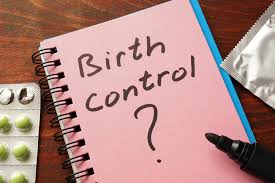Side effects of birth control
Hormonal methods of birth control are considered safe for most people but is there a limit?
Some people take the birth control pill for much of their adult lives. Others use hormonal contraception devices, such as intrauterine devices (IUDs), that can stay in place for several years.
Most long-term birth control options involve the use of hormones. The hormones work in two main ways: stopping and thickening the cervical mucus, which makes it difficult for the egg and sperm to meet.
The safety of using long-term hormonal birth control may depend on a person’s risk factors, age, and medical history.
Understanding the difference is important. Hormonal methods of birth control contain artificial progesterone or estrogen and progesterone. They affect the hormone levels in a person’s body, so some people experience side effects shortly after taking them. Some side effects will go away within several months, others may develop after taking hormones for some time.
Possible short-term side effects include:
- bleeding between periods, or spotting
- headaches
- nausea
- breast tenderness
- weight gain
- mood swings
For most people, using contraceptives for a long time does not cause significant problems.
Some people use hormonal birth control for to manage long-term medical conditions including heavy or painful periods, endometriosis, and menopause symptoms. Doctors approve the use of the pills for these conditions.
A doctor can advise individuals about the safety and risks of using long-term birth control according to their medical history.
Other factors and possible side effects to consider when taking long-term birth control:
Birth control and cancer -there is some evidence that hormonal contraceptives may increase the risk of breast and cervical cancer but reduce the risk of endometrial, ovarian, and colorectal cancers.
The hormones in birth control, including progesterone and estrogen, may stimulate the growth of some types of cancer cells and reduce the risk of others developing.
Some organization suggest that birth control pills could slightly increase the risk of developing breast cancer compared to those who have never used them. This risk goes away when people have been off the pill for 10 or more years.
These same studies suggest that taking birth control for more than 5 years may increase the risk of cervical cancer. The longer people take the pill, the higher their risk. However, the risk should go back down gradually when someone stops taking the pill.
One stud y looked at the prevalence of cancer in over 100,000 women (50 to 71) taking birth control pills. The study indicated that long-term use of birth control decreased the risk of both ovarian and endometrial cancer.
Birth control and blood clots: Some studies indicate that the use of oral contraceptives containing both progesterone and estrogen increased people’s risk of developing a blood clot.
So how do we decide?
Most people can safely use hormonal contraceptives for many years, provided their doctor has recommended it.
Doctors may advise some people to avoid using certain types of birth control. depending on a person’s medical history, age, and overall health
As always, patients need to consult their doctor it birth control pills cause side effects. Sometimes the doctor may recommend to change pills until one is found that works for the patient.
People with a history of blood clots may prefer progesterone-only birth control pills or the hormone-free IUD.
Are there other options?
All hormonal methods of birth control, including the pill, patch or implant, may cause similar side effects and long-term risks. Like most treatments, there is no one “best” method of birth control. The best option depends on a person’s lifestyle and medical history.
Long-term non-hormonal options are also available, including the non-hormonal IUD.
Long-term contraception methods include:
- Pills: Contraceptive pills often contain both artificial progesterone and estrogen. People can also use progesterone-only pills.
- Shots: Contraceptive shots contain progesterone and prevent pregnancy by stopping ovulation. A doctor can give a contraceptive shot every 3 months.
- Implant: An implant is a small, thin rod that a doctor inserts under the skin in the arm. It releases hormones that prevent ovulation. The implant protects from pregnancy for up to 4 years.
- Vaginal ring: A person inserts a vaginal ring inside their vagina. The person leaves the ring in for 3 weeks and then takes it out for 1 week. The ring releases hormones, which prevent ovulation.
- Patch: The patch contains hormones that prevent pregnancy. A person sticks the patch on their back, bottom, or arm. The person changes the patch weekly for 3 weeks then takes the fourth week off. They must repeat this every month.
- Intrauterine device (IUD): An IUD is a small device that a doctor inserts in the cervix. Currently, IUDs last anywhere from 3 to 12 years. People can get hormonal or non-hormonal versions of the IUD.
- Surgical Sterilization: Options are available for both sexes. However, these are permanent methods. They are completely hormone-free.
Now that you have all the info…
Many women have used birth control safely for as long as they have needed, provided that a doctor has given the okay. People should discuss their individual needs and risk factors with a doctor when deciding whether to stay on hormonal contraception for an extended period.
Consider all the options and discuss all possible health risks and benefits with a healthcare provider.

